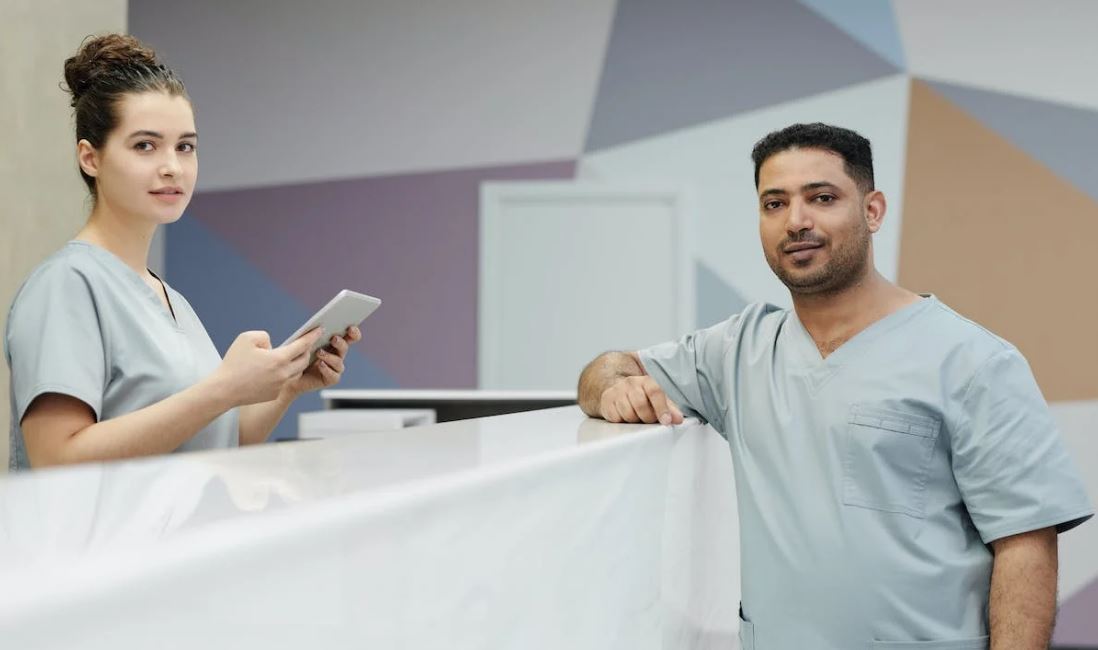In the arena of men’s health, few topics are as pertinent as testosterone. The quintessential “man” hormone plays a multitude of crucial roles, from fostering muscle growth to influencing libido and maintaining overall vitality.
As men age or face specific health conditions, however, their natural testosterone levels dip. This leads to an unwanted range of side effects, like fatigue, difficulty concentrating, and decreased libido.
Testosterone replacement therapy (TRT) is a potential solution. But before you make the decision to start, there’s a lot of ground to cover. What are the benefits and considerations? How can you find the best TRT clinic?
In today’s article, we’ll break it all down for you.
What is testosterone replacement therapy (TRT)?
Testosterone replacement therapy is a medical treatment designed to elevate testosterone levels in individuals whose natural production has decreased. Depending on the type of treatment you receive, it involves the administration of testosterone into the body through various methods:
- Injections
- Patches
- Gels
- Under-the-skin implants
While many experience a gradual decline in testosterone levels as part of the aging process, some men see a more precipitous drop due to medical reasons. Conditions like hypogonadism (where the body is unable to produce normal levels of testosterone) and testicular cancer treatments often lead to a need for TRT.
Benefits of testosterone replacement therapy
Currently, approximately one in 50 men have low testosterone. This makes it one of the most prevalent men’s health issues, and it’s a major cause of erectile dysfunction. While it isn’t a solution for everyone, there are several benefits to TRT:
- Increased energy levels
- Improved muscle mass and strength
- Enhanced libido and sexual function
- Better mood regulation
TRT can also decrease the risk of certain health conditions. For example, it’s been shown to significantly increase bone density, which helps prevent osteoporosis.
Considerations before starting TRT
Before you start treatment, you’ll need a medical exam and diagnosis (this is not something you can self-prescribe). This involves a physical examination, a review of your medical history, and specific lab tests to measure your current testosterone levels and rule out potential underlying causes.
You’ll also want to consider the risks and side effects. Acne, fluid retention, and a higher red blood cell count (which can thicken your blood) are all potential side effects of going through TRT.
In some cases, simple lifestyle adjustments can improve your testosterone levels without the need for TRT. Changes in diet, exercise, deep sleep, and stress management can sometimes be all you need to get your body back to normal (in fact, the doctor will probably ask if you’ve tried this first).
Choosing a TRT clinic
If you and your healthcare provider determine TRT is the appropriate course of action, look carefully at whether a prospective clinic is (a) reputable, (b) staffed by experienced and credentialed professionals, and (c) focused on patient education and support.
On the flip side, be wary of clinics promising unrealistically quick results or that pressure you into making an immediate decision. Clinics that don’t conduct the necessary screenings or provide thorough consultations should be avoided at all costs. More than likely, your doctor has a few recommendations in your area you can pick from.
Final thoughts
The decision to pursue TRT requires proper understanding, realistic expectations, and a critical evaluation of the risks and benefits. It’s a valuable aid in enhancing the quality of life for millions around the world. By educating yourself and involving qualified professionals, you can take charge of your health and well-being in a way that aligns with your individual needs.



















